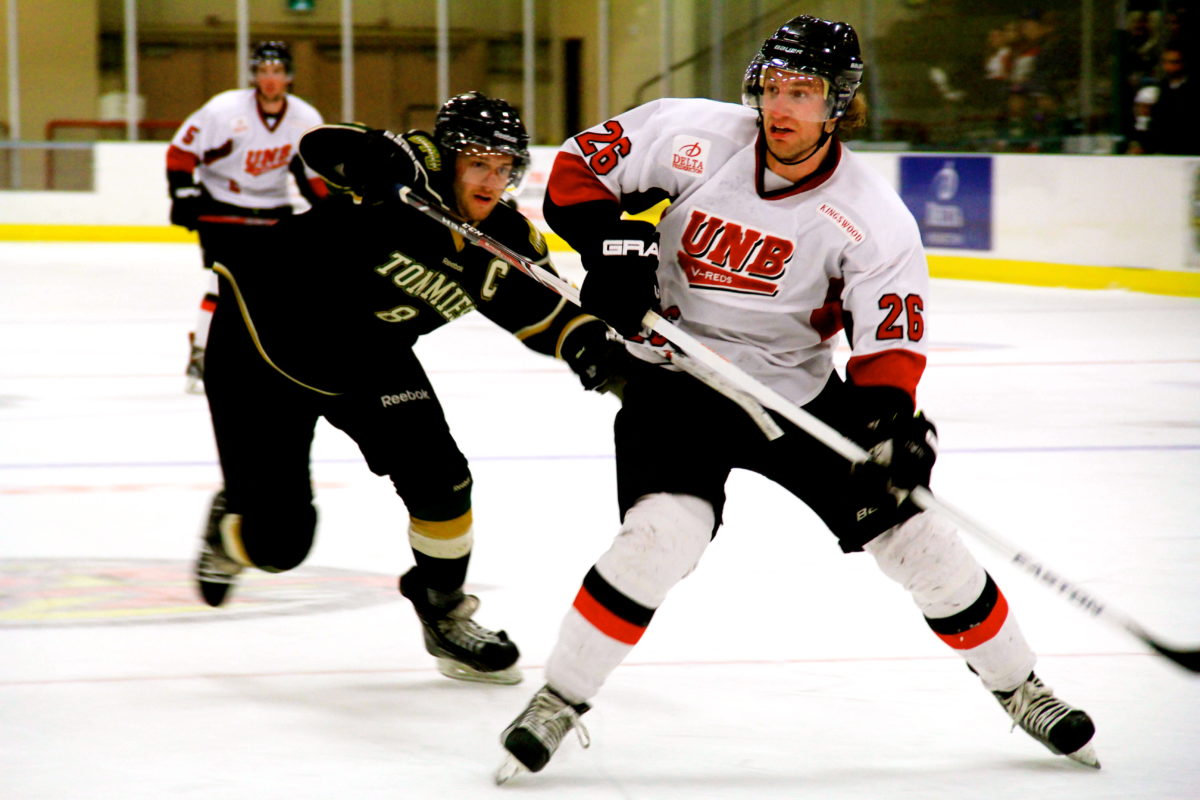Kristi Allain grew up in Peterborough, Ont. – home of the Petes. It’s a place where if you’re a junior hockey player, you’re a town celebrity.
“These players are widely celebrated,” she said. “They’re recognized on the street. People ask for autographs. It’s more of an identity than a career.”
Growing up, Allain never played hockey, but her parents were big Petes fans.
“My mom used to boast about only missing a game when my sister was born and when I was born. We were both born during the middle of the hockey season.”

The city of approximately 80,000 people is no small place by New Brunswick standards, but for Allain, Peterborough was a small community connected by the Petes. The community was shaped by the hockey team, and the hockey players were shaped by the cultural expectations of being a Petes hockey player.
Allain, a new sociology professor and researcher at St. Thomas University, studies the cultural identity of hockey players and how being a hockey player shapes their sense of what is to be a man and what is to be a man who plays hockey.
“We have a notion in Canada that there is an appropriate way to be masculine, and some of that is wrapped up in this kind of cultural identity around hockey.”
Allain said as a Canadian hockey player you’re expected to be rough, gritty and wiling to sacrifice your body for the team. She said not all players live up to this, but it helps the way Canadians and society understand these players.
“In some ways it becomes a shorthand for even understanding these players at all.”
Allain began teaching at St. Thomas this September. She is teaching a Sociology of Sport class where her students, many of them athletes, are challenged to think critically about the identities and the ways, as a society, we think about athletes and sports.
Allain said for a lot of her students, this is something they’ve never really thought about before.
“Sometimes they are surprised. We don’t often unpack a sport as a social phenomenon and really look at how we understand athletes, what sorts of identities are circling there, what sorts of problems there are in sport and how they are different from and the same as problems in society more broadly.”
While at STU, Allain will continue research on hockey, but with a different angle. She will explore the role a mother plays in her son’s hockey development and how that affects the way he expresses himself as a young man.
“It’s less appropriate to celebrate a femininity that’s based on bashing and banging. It challenges notions of femininity.”
Allain said people are less comfortable with this, and so it’s not picked up as a model of Canadian identity in the same way.

“When we celebrate hockey in Canada, we’re celebrating a particular kind of expression of nationalism – one that’s male, that’s white, that’s primarily straight. And it really ignores other issues – issues about class, about regionalism, ability and gender.”
Whether or not this is problematic, said Allain, hockey as a nationalist symbol is here to stay, and here to provide society with a way of understanding what it means to be a male hockey player.

